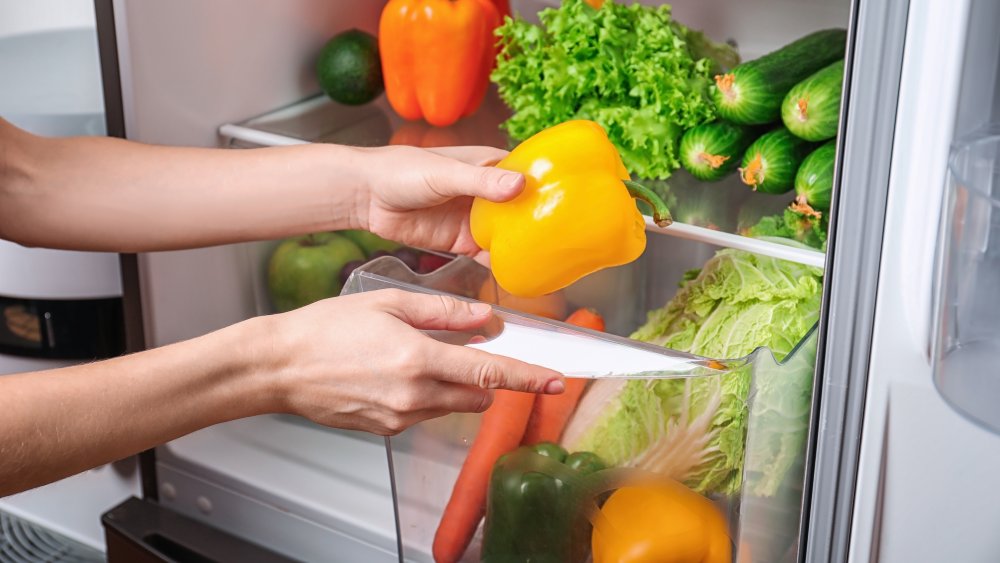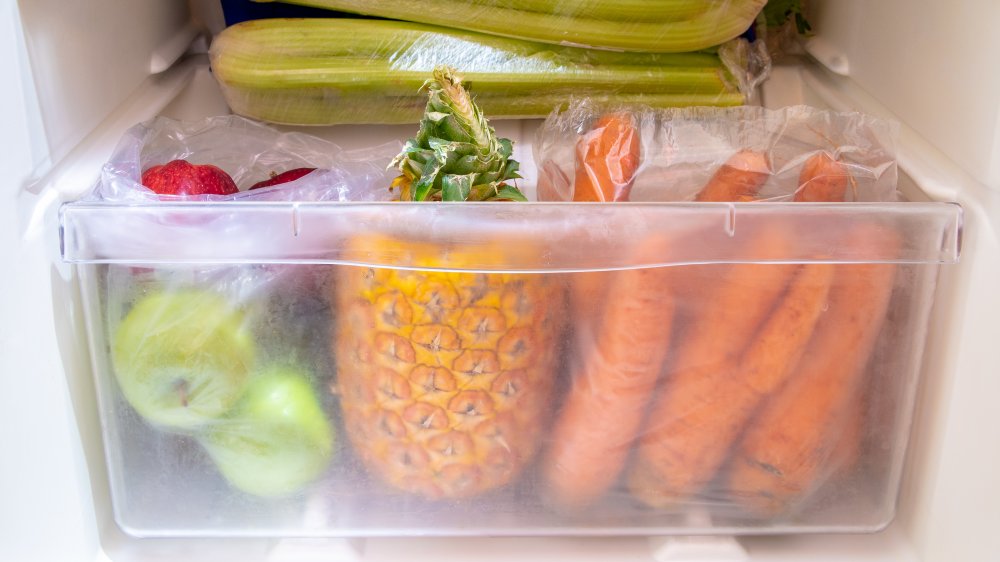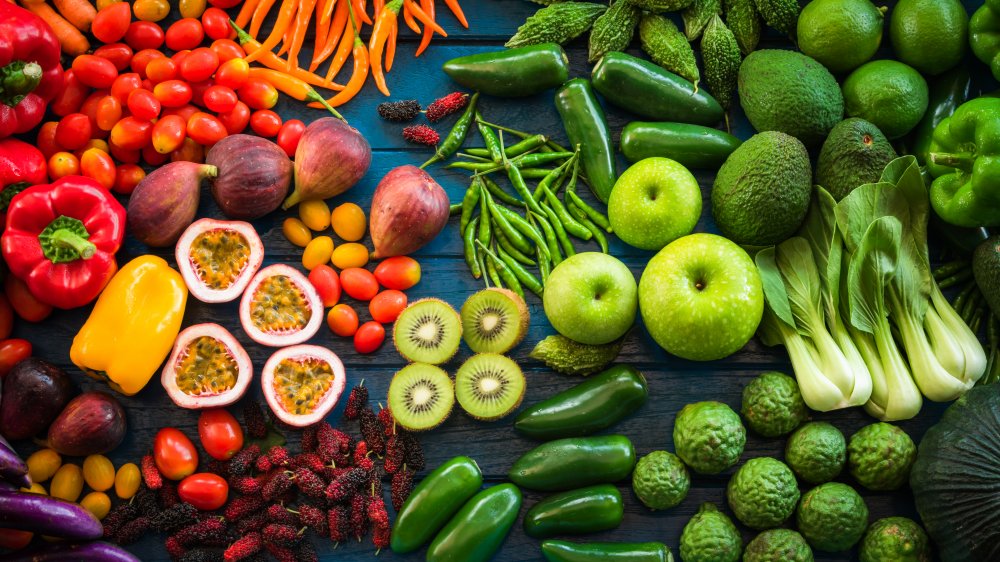Turns Out You're Using Your Fridge Drawers All Wrong
There are few things in a fridge that cause confusion, but one of them is definitely those crisper drawers. And chances are, you haven't been using them right. "In the many years of research we've done, we've found over and over again that crisper drawers seem to be a mystery to the consumer in terms of how they work or how they should be set," Mary Kay Bolger of Whirlpool told Martha Stewart.
But with a little food science, you can prolong the life of that wilting lettuce or squeeze an extra few days out of your cilantro. As Bolger says, "It's pretty simple if you think about it this way: It's all about the airflow in and out of the drawer." Just please don't put tomatoes in there, okay?
How crisper drawers work
It turns out those mysterious bins aren't just for show. They actually create a space where the air is more humid than the rest of the fridge, which can keep vegetables — you guessed it — crisp. Most fridge drawers have controls on the side for high or low humidity, and can be controlled by moving a switch that lets more air in or out. The more air in, the less humid the space. If your drawers don't have a switch, they are considered "high humidity."
Produce, made up of a lot of water, stays fresher in more humid environments — hence, that mist sprayed in grocery store refrigerators that drenches the broccoli, and sometimes you. Crispers prevent dehydration in the same way.
What to store in what fridge drawer
When storing produce, not all fruits and veggies are created equal. Many fruits, like apples, melons, and avocados, release ethylene gases, which cause their neighbors to ripen and eventually rot. It's best, says Marcia Steed of Iowa State University, to have "high humidity" and "low humidity" drawers. Put items like lettuce and cucumber in the high humidity drawer and ethylene-emitters like fruit in the low-humidity drawer, where they won't affect veggies that are sensitive to ethylene.
Some produce doesn't need to go in the fridge at all. Tomatoes, peaches and other stone fruit can get mealy and lose flavor in the fridge, and bananas tend to turn black in the cold. Keep citrus, potatoes, onion and garlic in a cool, dry space outside the refrigerator.
And as with most food, follow a "first in, first out rule" with fridge drawers (via Martha Stewart). Store older items toward the front and newer items toward the back. They'll be waiting for you, crisper than ever.


